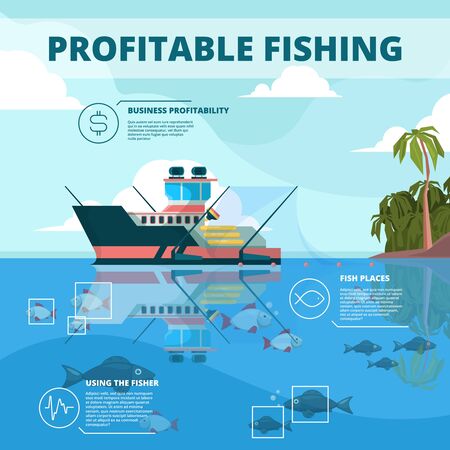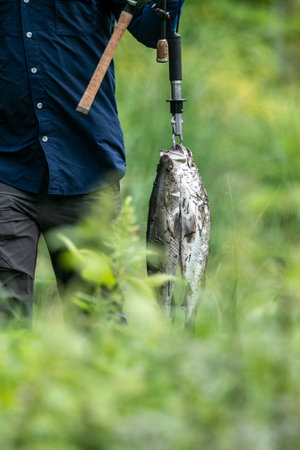Introduction to Aquatic Vegetation in American Waters
When it comes to understanding fish behavior and the creation of ambush zones, you cant overlook the impact of aquatic vegetation. Across the United States, our lakes, rivers, and wetlands are home to a diverse range of aquatic plants that play a pivotal role in shaping freshwater ecosystems. From thick mats of hydrilla in Florida’s bass lakes, to waving stands of wild rice up north, and the dense clusters of cattails and bulrushes lining midwestern ponds, these plants do more than just provide scenery—they influence everything from water quality to fish distribution. Submerged species like eelgrass and pondweed offer crucial cover for baitfish and juvenile predators, while emergent vegetation such as water lilies and pickerelweed create complex structures above and below the surface. Each type forms its own microhabitat, influencing where fish feed, hide, and hunt. Understanding the variety and functions of aquatic vegetation in American waters is essential groundwork for anyone looking to unlock fish behavior patterns or pinpoint prime ambush zones for angling success.
2. Fish Behavior in Relation to Aquatic Cover
When it comes to understanding how fish interact with their environment, aquatic vegetation plays a central role. American anglers and outdoor enthusiasts often observe that fish use underwater plants not just for hiding, but as essential resources for survival. Lets break down how various fish species utilize aquatic cover for shelter, feeding, spawning, and protection from predators.
Shelter and Protection
Aquatic vegetation offers immediate refuge from both predators and harsh environmental conditions. Largemouth bass, bluegill, and crappie are commonly found tucked into thick weed beds or under floating mats of lily pads. These areas provide shadow, obscure the fish from above, and help them avoid larger predatory birds and mammals.
Feeding Opportunities
Vegetation zones are bustling with life—think insects, small crustaceans, and baitfish. Predatory fish often patrol the edges of these weed beds, using the dense growth as concealment before ambushing prey. This behavior is especially pronounced in species like northern pike or largemouth bass. The following table highlights typical relationships between popular U.S. game fish and aquatic cover during feeding:
| Fish Species | Preferred Vegetation Type | Feeding Strategy |
|---|---|---|
| Largemouth Bass | Submerged weeds, lily pads | Ambush from shadows |
| Northern Pike | Cattails, submerged grass | Lurking along weed edges |
| Bluegill | Pondweed, hydrilla | Grazing on insects/larvae |
Spawning Grounds
Aquatic vegetation is also critical during spawning season. Many species choose dense plant growth for laying eggs because it offers stability and protection from currents and egg-eating predators. For instance, sunfish sweep nests in shallow weedy areas, while bass use submerged plants to anchor their eggs.
Protection from Predators
The thick tangles of milfoil or coontail serve as a natural defense system for smaller fish and fry. By weaving through the stalks and leaves, young fish can avoid being spotted or caught by larger predators lurking nearby.
Summary Table: How Fish Use Aquatic Vegetation
| Function | Description |
|---|---|
| Shelter | Hiding from threats and weather extremes |
| Feeding | Stalking prey among plants or grazing on smaller organisms |
| Spawning | Laying eggs in safe, stable environments |
| Protection | Avoiding detection by predators |
This relationship between fish behavior and aquatic vegetation shapes not only where youll find different species but also when theyre most active—key knowledge for any serious angler or nature observer in the U.S.

3. Vegetation as Natural Ambush Zones
Underwater plants aren’t just passive scenery—they’re dynamic game changers for fish behavior, especially when it comes to predatory ambush tactics. Aquatic vegetation like lily pads, reeds, and submerged grasses create natural hideouts where big predators like largemouth bass, pike, or even catfish can disappear from sight. These green zones provide cover that lets these hunters blend in, conserving energy while they lie in wait for unsuspecting prey. For smaller fish or baitfish, thick plant growth can act as both a safe haven and a trap. While dense weeds might offer temporary refuge from predators, they also funnel movement along predictable paths or edges. This means prey species are often forced to swim through narrow gaps or along the outside of weed beds—prime territory for an ambush. When you’re out fishing American waters—from Midwest lakes to Southern backwaters—knowing how vegetation shapes fish traffic can seriously boost your catch rate. The interplay between cover and open water creates tension; every patch of hydrilla or coontail becomes a potential danger zone. Smart anglers read the underwater landscape just like predators do: looking for those transition spots where cover meets open water, because that’s where most strikes happen. Whether you’re after bass with topwater frogs or chasing northern pike with spinnerbaits, understanding how aquatic plants influence predator-prey dynamics is key to unlocking the secrets of any freshwater ecosystem.
4. Regional Differences Across the U.S.
Aquatic vegetation’s impact on fish behavior and ambush tactics varies greatly across American regions due to differences in climate, water types, and dominant plant species. Anglers and outdoor enthusiasts need to understand these regional differences to adapt their strategies for success.
Midwest: Lakes and Weedy Cover
In the Midwest, freshwater lakes with dense beds of milfoil, coontail, and cattails create prime ambush zones for bass, northern pike, and muskie. Fish here often use heavy weed mats for concealment, waiting for prey to pass by open pockets or along weed edges. Anglers typically target these transition zones, using weedless lures to avoid snags while provoking reaction strikes from hidden predators.
South: Submerged Grass Flats and Timber
The Southern U.S. is famous for reservoirs with submerged hydrilla, lily pads, and standing timber. Largemouth bass thrive in these thick grass flats, using the vegetation both for shade during hot summers and as staging areas to ambush shad or bluegill. The combination of scattered cover and open channels allows fish to alternate between active hunting and passive ambush tactics.
Pacific Northwest: Rivers and Emergent Plants
In the Pacific Northwest, rivers like the Columbia feature emergent plants such as reeds and bulrushes along slow-moving backwaters. Salmonids (trout and salmon) use these vegetated margins for protection from current and predators, but rely more on current breaks than dense underwater cover. Ambush tactics here are subtle—fish hold near vegetation to intercept drifting insects rather than attacking larger prey.
Comparison Table: Aquatic Vegetation Impact by Region
| Region | Main Vegetation Types | Key Fish Species | Common Ambush Tactics |
|---|---|---|---|
| Midwest | Milfoil, Coontail, Cattails | Bass, Pike, Muskie | Hiding in dense weeds; striking from edges/pockets |
| South | Hydrilla, Lily Pads, Timber | Largemouth Bass, Crappie | Lurking in grass flats; ambushing near open lanes |
| Pacific Northwest | Reeds, Bulrushes (emergent) | Trout, Salmon | Holding near cover; intercepting food in current breaks |
Adapting Tactics for Regional Success
No matter where you fish in America, knowing how local vegetation shapes fish behavior is critical. Whether you’re flipping jigs into Midwestern weed beds or working topwater frogs across Southern lily pads, adapting your approach to the region’s unique habitat will put you closer to that next big catch.
5. Implications for Anglers and Conservationists
Practical Guidance for Anglers
If you’re looking to up your fishing game, understanding aquatic vegetation isn’t just book smarts—it’s tactical know-how. Fish use weed beds, lily pads, and submerged grass as ambush points, so targeting these areas can boost your catch rate. Start by casting lures or live bait near the edges of dense vegetation. Bass and pike love to sit just inside these zones, waiting for prey to wander by. Use weedless rigs or topwater baits to minimize snags and increase your chances of a solid hookset. Pay attention to seasonal changes: in spring and summer, new growth attracts baitfish and predators alike, while in fall, dying plants may concentrate fish in remaining green patches.
Insights for Habitat Management
For conservationists and fisheries managers, the relationship between fish and aquatic vegetation is a balancing act. Healthy plant growth provides essential cover for young fish, supports diverse food webs, and helps stabilize shorelines. However, excessive or invasive vegetation can choke waterways and disrupt native species. Managing aquatic habitats means protecting beneficial plant communities while controlling invasives like hydrilla or water hyacinth. Restoration efforts should focus on replanting native species, monitoring water quality, and educating anglers about the importance of leaving key vegetation intact.
Collaborative Strategies for Success
Anglers and conservationists share common ground—both benefit when fish populations thrive. Responsible fishing practices, like catch-and-release near critical habitats and avoiding destruction of aquatic plants, help preserve these important ecosystems. Participating in habitat restoration projects or reporting sightings of invasive species can make a real difference at the local level.
Takeaway
Whether you’re casting for trophy bass or working to protect America’s lakes and rivers, recognizing the role of aquatic vegetation is key. Smart fishing around weed beds leads to more bites, while thoughtful habitat management ensures healthy waters for generations to come.

